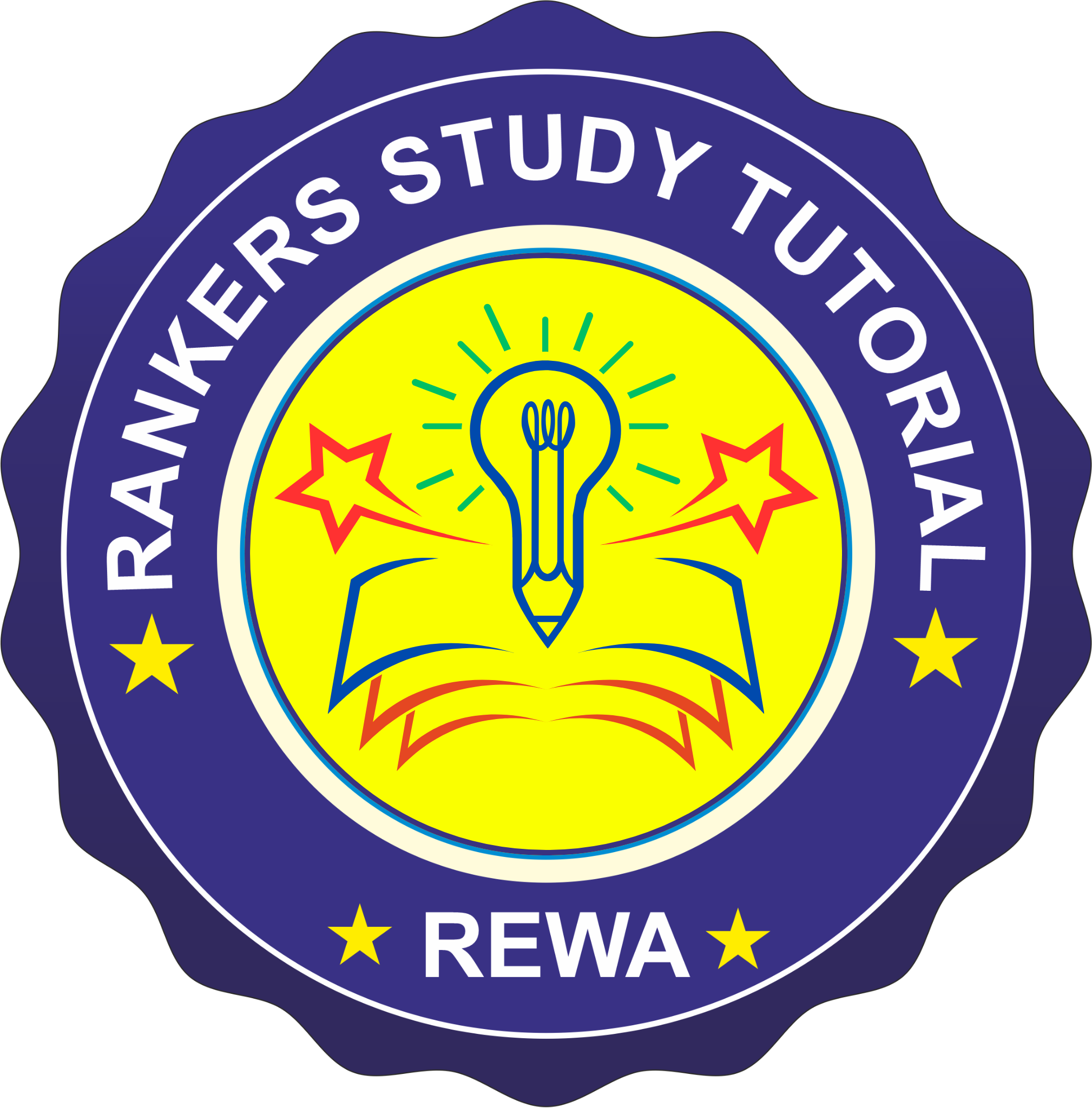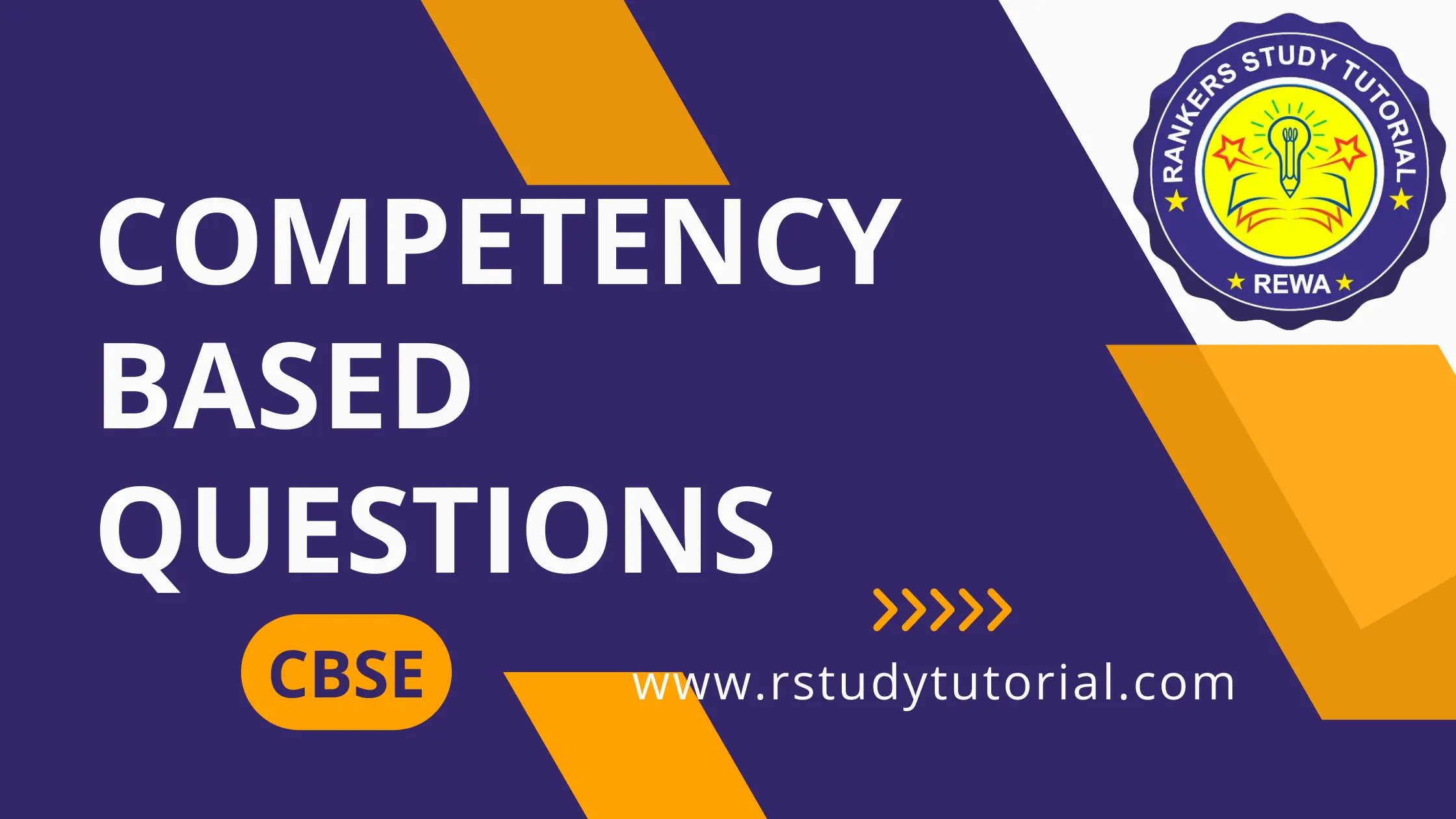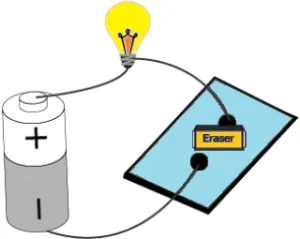Hint: Describe the structure and function of the electric cell.
Question.1. The image represents an electric cell.
(a) Metal cap with a negative sign on both sides
(b) Metal cap on top, metal disc on bottom and a positive sign on both ends
(c) Metal disc on both ends with a positive on top and negative sign at bottom
(d) Metal cap with a positive sign on top and a metal disc with negative sign at the bottom
Question.2. The image represents the parts of a torch light.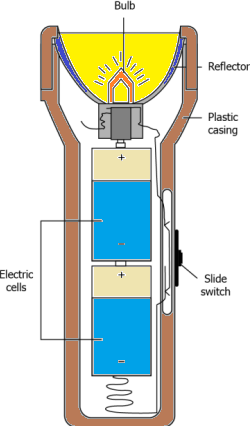
(a) Spread the light to a larger area
(b) Supply electricity to light the bulb
(c) Protect internal parts from damage
(d) Make it easy to open or close the circuit
Ans.1. (d) Metal cap with a positive sign on top and a metal disc with negative sign at the bottom
Ans.2. (b) Supply electricity to light the bulb
Hint: Analyse the flow of current in a simple electric circuit with battery, bulb and
wires to identify necessary condition to ensure flow of current.
Question.3. The image shows a closed electric circuit.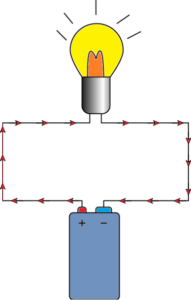
(a) Negative terminal of the bulb through the battery and back to the positive terminal of the bulb
(b) Positive terminal of the bulb through the battery and back to the negative terminal of the bulb
(c) Negative terminal of the battery through the bulb and back to the positive terminal of the battery
(d) Positive terminal of the battery through the bulb and back to the negative terminal of the battery
Question.4. The image shows two states of an electric circuit.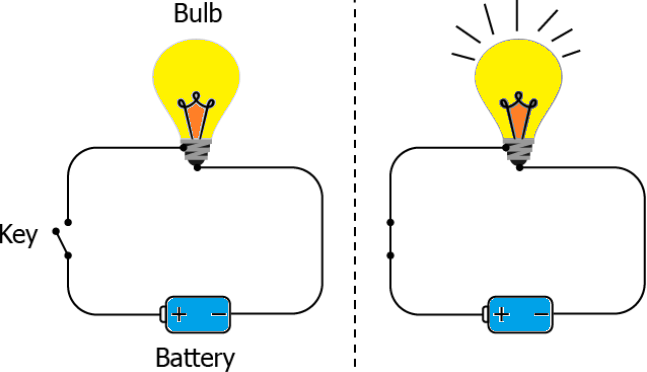
(a) Presence of a key
(b) Completion of the circuit
(c) Wires of different length
(d) Positive and negative sign on the cell
Ans.3. (d) Positive terminal of the battery through the bulb and back to the negative terminal of the battery
Ans.4. (b) Completion of the circuit
Hint: Distinguish between complete and incomplete circuit with a well labelled figure.
Question.5. The image represents two circuits marked as X and Y.
(a) X→Complete, Y→Complete
(b) X→Complete, Y→Incomplete
(c) X→Incomplete, Y→Complete
(d) X→Incomplete, Y→Incomplete
Question.6. A student observes the circuit shown in the image and concludes that it is a complete circuit.
(a) Presence of switch
(b) Glowing of the bulb
(c) Presence of light bulb
(d) Unequal length of two wires
Ans.5. (b) X→Complete, Y→Incomplete
Ans.6. (b) Glowing of the bulb
Hint: Make a simple working model of an electric switch with easily available materials.
Question.7. Which of these materials can be used to make a switch for an electric circuit?
(a) Eraser
(b) Straw
(c) Paper clip
(d) Pencil
Question.8. A student wants to make a switch for an electric circuit using a few materials shown in the image.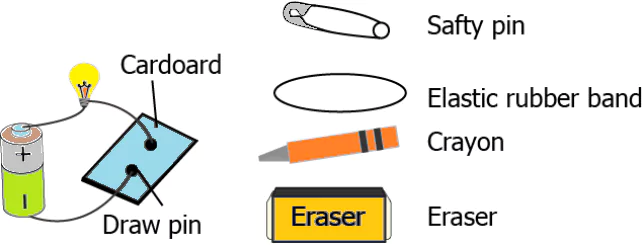
(a) 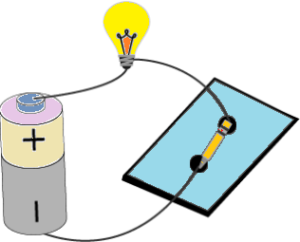

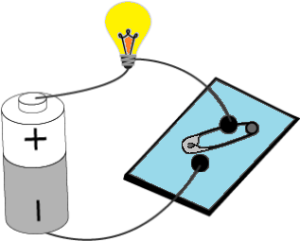
Ans.7. (c) Paper clip
Ans.8. (c)
Hint: Test items to classify them as conductor and insulator in order to examine the role of conductors and insulators in day-to-day life.
Question.9. A student connects the open ends of an electric circuit to the opposite end of a nail as shown in the image. He observes that the light bulb glows.
(a) Paper clip
(b) Plastic pipe
(c) Cotton string
(d) Piece of cardboard
Question.10. A student studies that electric wires generally have a plastic or rubber coating around them. Which of these describes the role of the coating in a wire?
(a) It ensures safe transfer of electricity
(b) It reduces the wastage of electricity in the wires
(c) It enables transfer of electricity to long distances
(d) It helps electricity to move faster through the wires
Ans.9. (a) Paper clip
Ans.10. (a) It ensures safe transfer of electricity
Hint: Infer why metals like copper and aluminium are used for making wires for domestic & industrial purposes.
Question.11. The table lists a few conducting materials. The materials are arranged in descending order of their conductivity.
(a) Aluminium
(b) Bronze
(c) Copper
(d) Tin
Question.12. A student made an incomplete circuit with a small gap as shown in the image.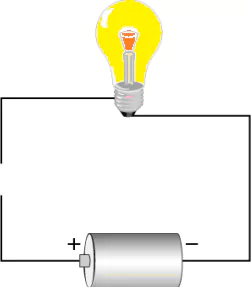
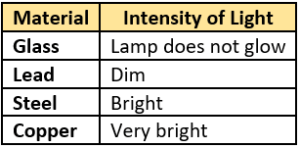
(a) Steel should be used to make insulating cover for electric wires
(b) Copper is the best materials to conduct electricity
(c) Lead is the best material for making wires
(d) Glass can be used to store electricity
Ans.11. (c) Copper
Ans.12. (b) Copper is the best materials to conduct electricity
